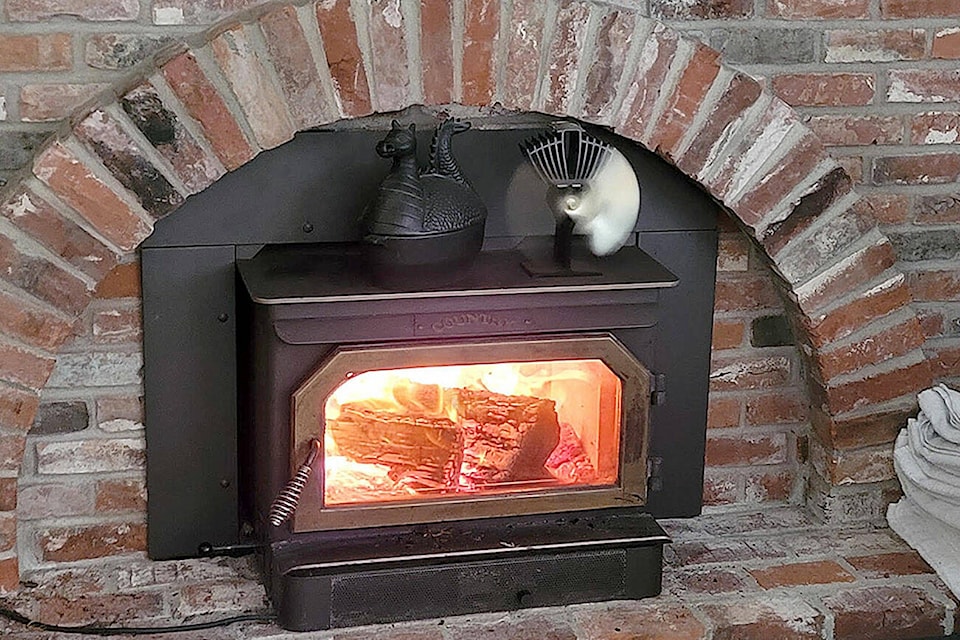By Rob Manering, Special to Black Press Media
Is your woodstove a fire hazard? Are your burning practices a house fire waiting to happen?
What do you do if the chimney catches fire? This article will explore the answers to these questions.
Is your woodstove ready for the winter burning season, and what is the one item many people forget to check?
Many people assume that their wood stoves are always ready for burning wood and they overlook one critical maintenance issue. You should check your fire bricks for large cracks and general deterioration. A new brick is rectangular and all of the surfaces are flat and square. Fires will lead to a loss of material on the flat surfaces and the bricks will become concave. When you lose about 1/4” from the surface then it’s time to plan for replacement. If they deteriorate too far it can lead to hot-spotting in the stove, leading to eventual failure. The bricks are available at stores that sell hardware, or wood stove suppliers.
Preventing chimney fires
Chimney fires don’t have to happen. Here are some things you can do to avoid them:
You should only burn seasoned wood in your wood stove. Dryness is more important than soft wood versus hard wood considerations.
Smaller, hotter fires burn more completely and produce less smoke (and therefore less creosote). Burning unseasoned wood leaves behind a sticky residue in the chimney called creosote. With each fire, creosote builds up in the chimney. Creosote is highly flammable. That is why it is important to have your chimney professionally cleaned (swept), and inspected, each year to remove this fire hazard.
Burning cardboard boxes, wrapping paper and trash can spark a chimney fire. So please don’t burn them in your wood stove.
What to do if you have a chimney fire
Chimney fires can burn slowly and quietly or they can dramatically explode accompanied by a noise not unlike a freight train or low-flying airplane. Flames or dense smoke may shoot from the top of the chimney. If you have a chimney fire, get everyone out of the house and call 911 to have the fire department respond to put out the fire.
Here are some steps that may help save your home but use these steps only if you are not putting yourself at risk. Structures are replaceable but lives are not.
• Keep a sandwich baggie full of baking soda near the fireplace or woodstove and toss it in the fire. Alternatively, toss one cup of water (no more) onto the fire.
• Cut off the air supply to the fire by closing dampers, fireplace doors, etc.
• If it’s practical and safe from ground level outside use a garden hose to spray down the roof (not the chimney) so that the fire from the top of the chimney won’t spread to the rest of the structure.
• Wait outside for the firefighters to arrive.
The fire department can put out any fires in the structure and cool down the chimney. Using a thermal imaging camera the Fire Department will identify any remaining hot spots and deal with them appropriately. The fire department will use its ventilating equipment to remove smoke from the building.
Once the fire department has finished its job, call a professional chimney sweep to inspect for damage before using the woodstove or fireplace again.
Fires can take only seconds to go from a minor flame to a major incident. If you have doubts about whether a situation requires the fire department to attend (you smell smoke and/or burning or see flames) call 911 immediately. The fire department will respond. It is better to have the department find that there is nothing to be concerned about than arrive too late to do anything because there was a delay in calling 911.
Rob Manering is Fire Chief at Denman Island Fire Rescue
